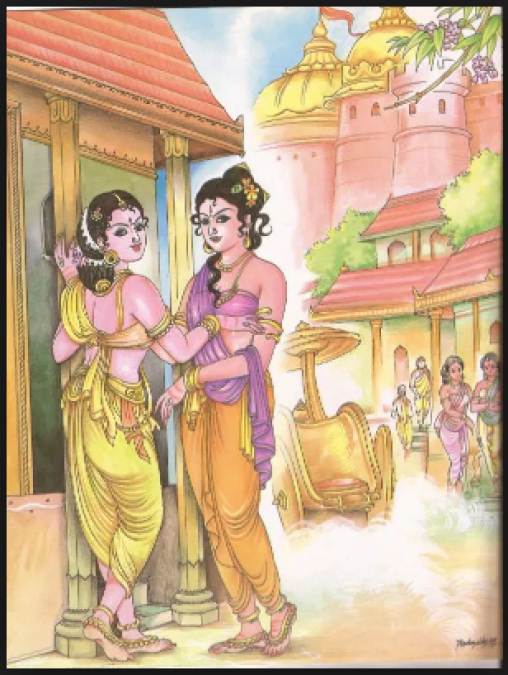
Women of the Vedic period (circa 1500-1200 BCE), were epitomes of intellectual and spiritual attainments. The Vedas have volumes to say about these women, who both complemented and supplemented their male partners. When it comes to talking about significant female figures of the Vedic period, four names - Ghosha, Lopamudra, Sulabha Maitreyi, and Gargi - come to mind.
Ghosha : Vedic wisdom is encapsulated in myriad hymns and 27 women-seers emerge from them. But most of them are mere abstractions except for a few, such as Ghosha, who has a definite human form. Granddaughter of Dirghatamas and daughter of Kakshivat, both composers of hymns in praise of Ashwins, Ghosha has two entire hymns of the tenth book, each containing 14 verses, assigned to her name. The first eulogizes the Ashwins, the heavenly twins who are also physicians; the second is a personal wish expressing her intimate feelings and desires for married life. Ghosha suffered from an incurable disfiguring disease,
Lopamudra: The Rig Veda ('Royal Knowledge') has long conversations between the sage Agasthya and his wife Lopamudra that testifies to the great intelligence and goodness of the latter. As the legend goes, Lopamudra was created by sage Agasthya and was given as a daughter of the King of Vidarbha. The royal couple gave her the best possible education and brought her up amidst luxury. When she attained a marriageable age, Agasthya, the sage who was under vows of celibacy and poverty, wanted to own her. Lopa agreed to marry him and left her palace for Agasthya's hermitage. After serving her husband faithfully for a long period, Lopa grew tired of his austere practices.
also read Ramadan Fasting: Benefits and lesson learned during this session by Muslims
Maitreyi: The Rig Veda contains about one thousand hymns, of which about 10 are accredited to Maitreyi, the woman seer, and philosopher. She contributed towards the enhancement of her sage-husband Yajnavalkya's personality and the flowering of his spiritual thoughts. Yajnavalkya had two wives Maitreyi and Katyayani. While Maitreyi was well versed in the Hindu scriptures and was a 'brahmavadini', Katyayani was an ordinary woman. One day the sage decided to make a settlement of his worldly possessions between his two wives and renounce the world by taking up ascetic vows. He asked his wives their wishes. The learned Maitreyi asked her husband if all the wealth in the world would make her immortal.
Gargi: Gargi, the Vedic prophetess and daughter of sage Vachaknu, composed several hymns that questioned the origin of all existence. When King Janak of Videha organized a 'brahmayajna', a philosophic congress centered around the fire sacrament, Gargi was one of the eminent participants. She challenged the sage Yajnavalkya with a volley of perturbing questions on the soul or 'atman' that confounded the learned man who had till then silenced many an eminent scholar. Her question - "The layer that is above the sky and below the earth, which is described as being situated between the earth and the sky and which is indicated as the symbol of the past, present, and future, where is that situated?" - bamboozled even the great Vedic men of letters.
also read Taraweeh: A special evening Prayer offer during Ramadan; know the unknown fact about it